16,425 people reached on Lassi with Lavina FB page – 67 Reactions, Comments & Shares – 75 Likes
Satyam Shukla, Sharad Chauhan and 32 others like it on Lassi with Lavina FB page
1047 reached on LinkedIn – 9 Likes
In light of the Black Lives Matter movement, a re-visit to a 2017 article about the African heritage in India.
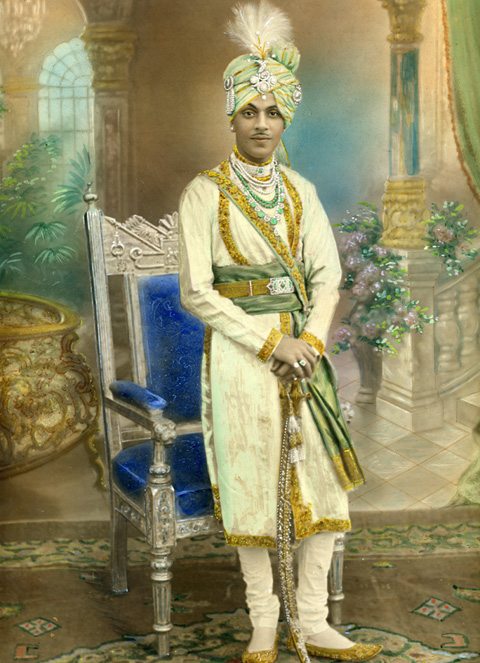
Africans in India: From Slaves to Sultans
Africans and Indians – A History of Black and Brown
[dropcap]M[/dropcap]ost Indians nurture a core belief from ancient Sanskrit texts – ‘Atithi Devo Bhava’ – ‘The guest is considered God’ – yet in 2017 the world watched in horror as young African students living and studying in India were subjected to mass attacks, beatings and discrimination by violent mobs of locals.
“The recent attacks in Uttar Pradesh show how black people in India – particularly African students – continue to face racist discrimination and violence,” said Makepeace Sitlhou, Campaigner at Amnesty International India. “Many of those injured were targeted merely because of the color of their skin. These are hate crimes, and authorities need to ensure that those responsible are punished.”
Racism in India: The African Portraits
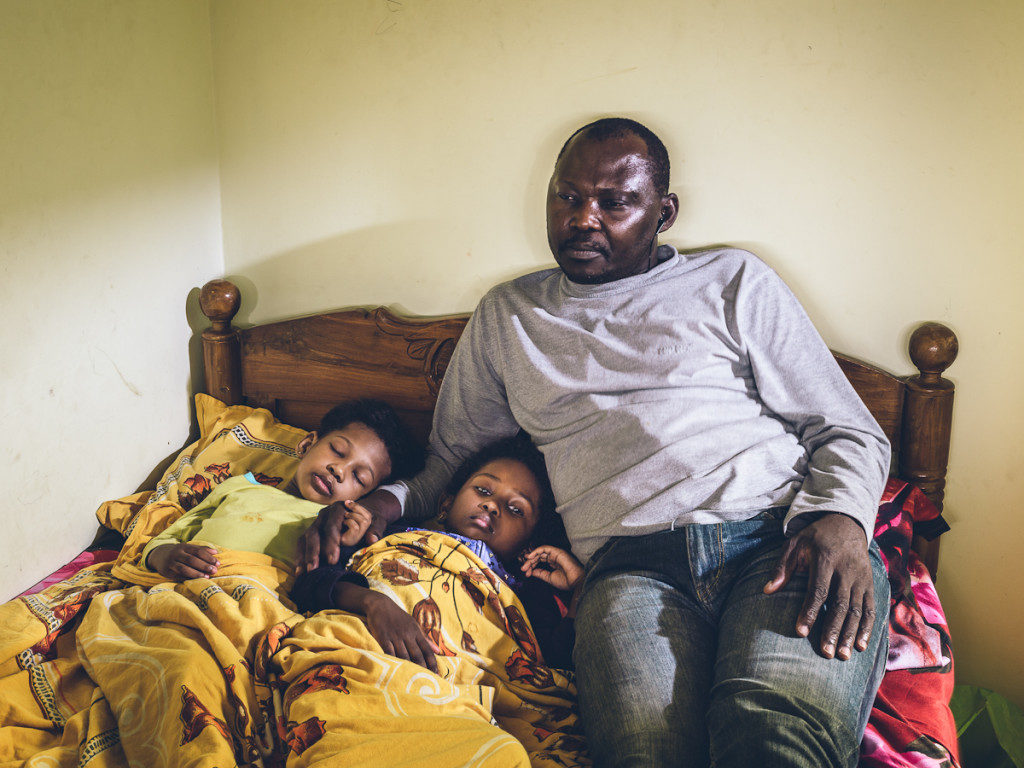
[dropcap]C[/dropcap]olor and race are the prejudices that have marked these volatile confrontations – do Indians have no memory of how they themselves felt when they were attacked in America or Australia on the basis of their own brown skin or their race? Is it considered a hate crime only when Indians are the target?
Sometimes the skin of the Indian attackers is as dark as that of the victims and yet these mobs have maintained a kind of superiority over young Africans invited to their country to study and imbibe knowledge. All these students have come as paying visitors, bringing their hard-earned money into the country – yet a virulent mob rule has prevailed with paranoia being stoked by internet rumors of drug use and cannibalism amongst the Africans and causing them such physical and mental harm that many of these students now fear for their lives.
What is it with our Indian attitudes toward color and race? Do we somehow assume our skin has simply darkened under the hot Indian sun but we really are white at heart?
Do we even know our own history? Are we even aware, for instance, that African rulers, generals and nawabs once reigned in India? Many of them were former slaves who rose to the highest positions in India through skill and bravery, a meritocracy which was not color-based. Were we Indians more open-minded and big-hearted then, more open to values that were more than skin-deep?
Strangely, very few Indians are aware of these Africans who came as slaves centuries ago, rose in many cases to positions of power, created thriving kingdoms… and whose descendants are now living in contemporary India in isolated clusters. They speak, dress, and think as Indians, yet are islands within the country.
Just as these modern day attacks were taking place in New Delhi, I visited an eye-opening exhibition in New York at Stony Brook University, titled ‘Africans in India – From Slaves to Generals and Rulers’. This startling exhibition helped me to connect the dots to the present and showed me the twists and turns human history takes.
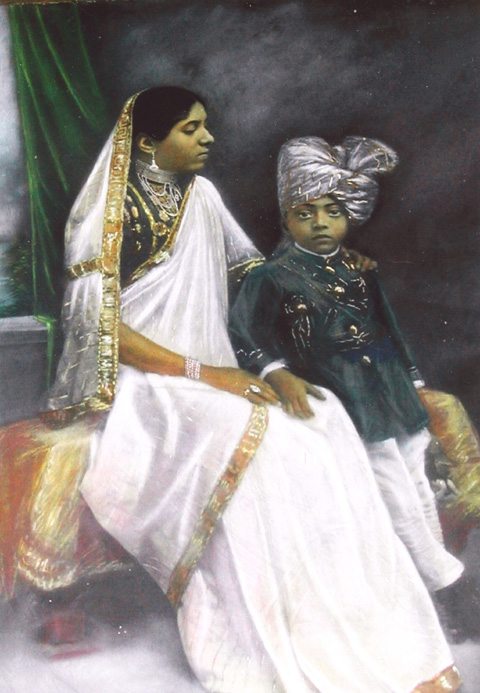
The African Nawabs
[dropcap]W[/dropcap]alking through the exhibition was like entering another dimension – here were images of African nawabs in full royal regalia, atop elephants and standing with their royal families dressed in all the Indian finery. Some had intermarried with Indian women, and you see them as part of the high society in Indian kingdoms. Their contributions in the arts and architecture were many. I walked down history’s pathways with Dr. Sylviane A. Diouf, who along with Dr. Kenneth X. Roberts, is the co-curator of this insightful show. Diouf, who is also the Director of the Lapidus Center for the Historical Analysis of Transatlantic Slavery at The Schomburg Center for Research in Black Culture of The New York Public Library, guided me through the show and explained the history of Africans in India.
“Generals, commanders, admirals, prime ministers, and rulers, East Africans—over the centuries—have greatly distinguished themselves in India,” she said. “They have written a story unparalleled in the rest of the world—that of enslaved Africans attaining the pinnacle of military and political authority not only in a foreign country but also on another continent.”
[dropcap]I[/dropcap]ndeed, it is hard to believe that these Africans came to India as captives in overcrowded dhows and yet managed to rise to their full potential in this new country, from Bengal in the northeast to Gujarat in the west and Deccan in Central India.
Diouf points out that from humble beginnings, some Africans carved out princely states complete with their own coats of arms, armies, mints, and stamps. They fiercely defended them from powerful enemies well into the 20th century when, with another 600 princely states, they were finally integrated into the Indian State.
They left behind a powerful legacy. The exhibition text notes: “As rulers, city planners, and architects, the Africans have left an impressive historical and architectural legacy that attest to their determination, skills, and intellectual, cultural, military and political savvy.” Indeed India still is home to the forts, mosques and mausoleums the Africans built over 500 years ago. Hard to believe, but they left their mark on the religious sphere too: even today Indians of all faiths visit the shrines of the 14th century African Muslim Sufi saint Bava Gor and his sister Mai Misra.
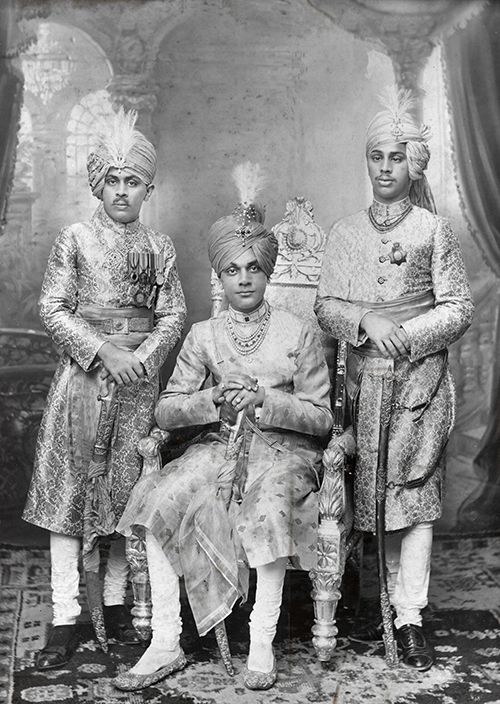
Gujaratis in Africa, Ethiopians in India
[dropcap]T[/dropcap]he Indian Ocean and the surrounding seas was a global trade scene even in those far-off days and commerce between East Africa and India goes back more than 2000 years when the Kingdom of Axum in Ethiopia had a flourishing trade with India. In fact, Axumite gold coins minted between 320 and 333 found their way to Mangalore in South India where they were discovered in the 20th century.
Ivory, silver, gold, wine, olive oil, incense, wheat, rice, cotton cloth, silk, iron, copper, skins, salt, and sesame oil were the hot commodities of the day and Axum was also involved in the slave trade. As Islam spread, so did trade between India and East Africa. NRI aspirations were already thriving in those ancient days when Indian Muslims from Gujarat migrated to African trading towns in Kenya, Zanzibar and the Comoros Islands where they worked with African and Arab merchants. While African traders traveled to and fro from India, some settled there and as far back as the 1300’s the Moroccan traveler Ibn Battuta mentioned Ethiopian merchants in India.
The most famous African trader was Bava Gor (Sidi Mubarak Nob). He came from East Africa during the 14th century and made Ratanpur in Gujarat his home. He became the patron saint of the agate bead industry and is credited with increasing the trade of quartz stone between East Africa, the Persian Gulf, and India.
Africans in India: From Slaves to Sultans
[dropcap]T[/dropcap]he African men and women who were taken to India through the early slave trade were known as Habshi (Abyssinian) and Sidi. They came mostly from Ethiopia, Eritrea, Somalia, and adjoining areas. As Diouf explains, “Muslim, Ethiopian Christian, and Indian traders preyed on people they all considered ‘pagans.’ Those bought for the Muslim world were converted to Sunni Islam. Trained as soldiers they were highly prized for their military skills. It is among these men that the generals, commanders, and rulers emerged.”
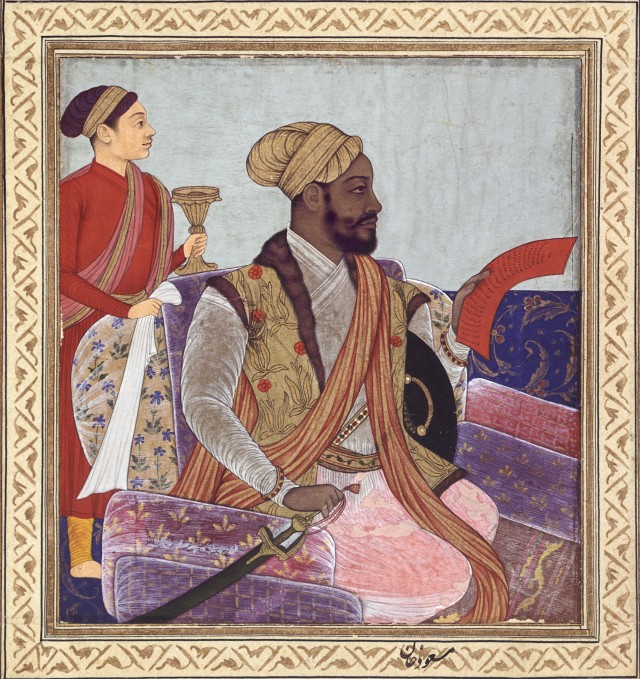
Elite Slavery & Social Mobility
[dropcap]S[/dropcap]ince Indians already had their own local slaves to do the hard labor, they hired these foreigners for specialized jobs as domestics in affluent households or in the royal courts and in the armed forces. While the lives of slaves were hard, many rose through the ranks to become ‘elite slaves’ with access to wealth and power.
‘Elite slavery’, the curators tell us, was often a frontier phenomenon, more entrenched in areas that underwent instability due to struggles between factions and where hereditary authority was weak. There, rulers considered Africans reliable because they were outsiders with no filial connections to the indigenous populations and did not possess traditional authority. As a consequence they made them court officials, administrators, and army commanders. These elite slaves were frequently at the center of court disputes and sometimes seized power for themselves.
As Diouf notes, “ Due to Islamic laws and societal conventions, East Africans and their enslaved descendants in India tended to have much greater social mobility than West Africans and their offspring did in the Americas. One distinctive trait of slavery in India and in the Islamic world was that, contrary to the reality in the Western world, bondage and “race” was not linked. Instead, factors such as religion, ethnicity, and caste were often more influential than color.”
The military was often the entree to power and riches and the Africans were regarded as great warriors who fought in armies all over India. Slave soldiers, guards, and bodyguards were routinely freed after a few years of service, often married local women, and were integrated into the larger society.
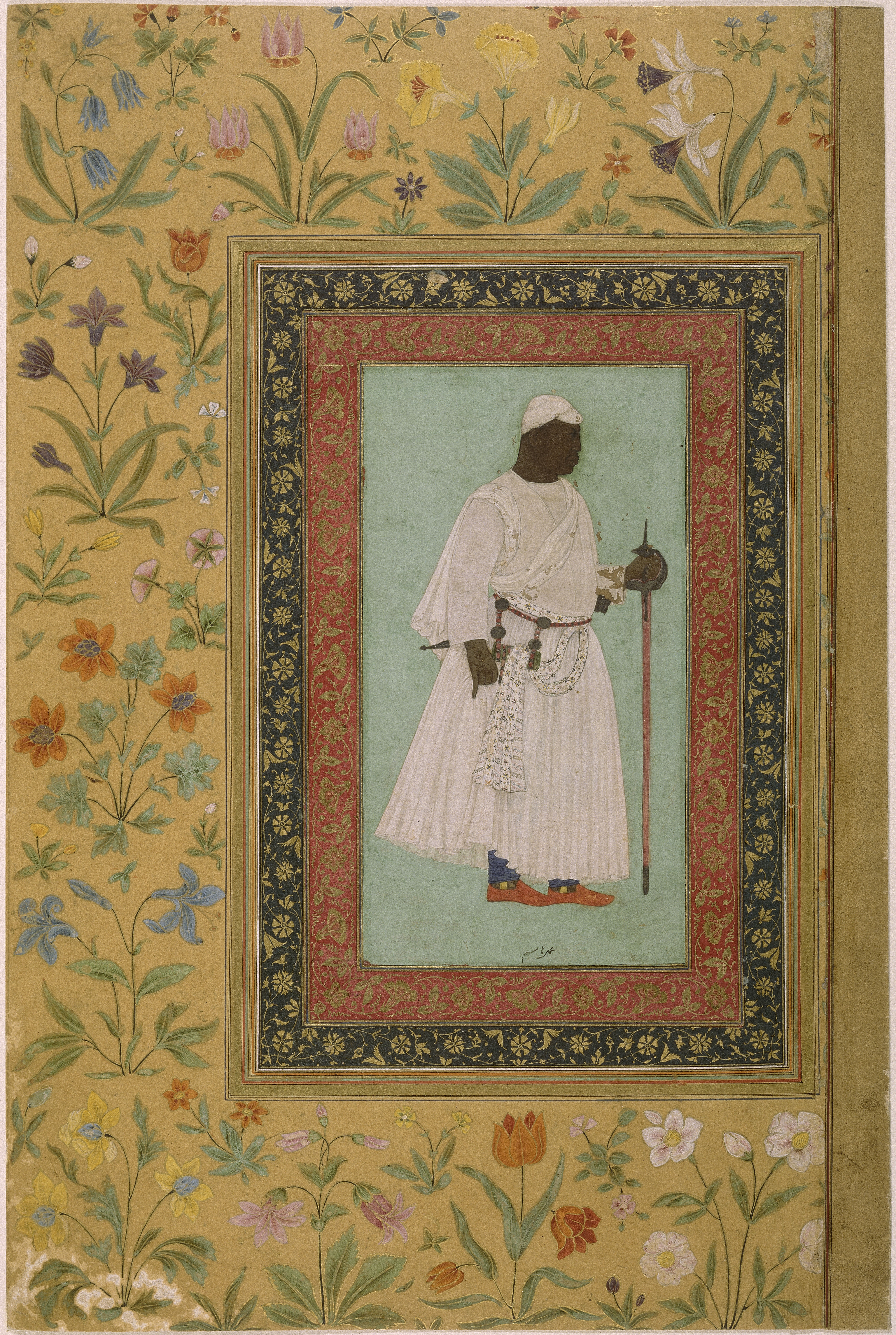
The African Sultans of Bijapur
[dropcap]O[/dropcap]ne of the great African success stories is that of Malik Ambar (1548-1626) born Chapu in Kambata in southwestern Ethopia. Converted to Islam and renamed Ambar, he lived in Yemen, Arabia – where he was educated – and Iraq, before being sold in India in the 1570’s. He became a slave to Chengiz Khan, the prime minister of Ahmednagar.
He went on to become a commander in Bijapur where he was granted the title of Malik, which means the Great. He later went back to Ahadnagar putting his army in service of another Ethiopian, Abhang Khan, and by the 17th century had gathered an army of 10,000 African cavalry and infantrymen. In 1600, he married his daughter to a 20-year old prince, installed him as sultan, and ruled in his place as regent and prime minister.
The success story continues: Fateh Khan, Malik Ambar’s son, inherited his father’s position as prime minister and married the daughter of another Ethiopian, Yaqut Khan, one of the most powerful nobles of Bijapur. In 1636, Fateh Khan poisoned Sultan Murtaza Nizam Shah III and installed the sultan’s son in his place. Fateh Khan held the real power until the Mughals conquered the sultanate.
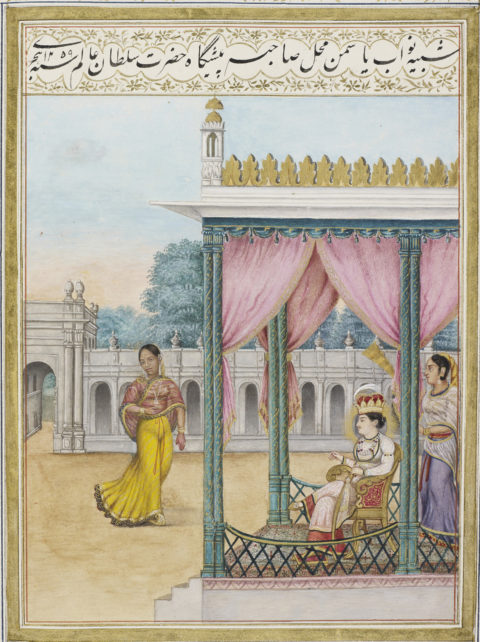
The Contributions of African Rulers in the Deccan
[dropcap]W[/dropcap]hat many Indians today may not realize is the contributions of the Africans in the past. Malik Ambar established the city of Khidki – now known as Aurangabad and oversaw its irrigation system, religious buildings including a church, several forts and a palace. The wall text at the exhibition proclaims: “He established a novel revenue system and distinguished himself for his religious tolerance. He granted land to Hindus, patronized Hindu scholars, and appointed Brahmins as officials and tax collectors. He left one of the most impressive legacies of any ruler in the Deccan.”
Once again many Indians will be surprised to learn that Malik Ambar was fiercely opposed to the Mughals who were invading India at that time and was one of their main enemies. A famous Mughal painting shows Jahangir shooting at the severed head of Malik Ambar, obsessed as he was with this persistent foe.
Finally Jahangir’s son Shah Jahan defeated Malik Ambar and forced him to pay tribute to the Mughals. The implacable Ambar regained control of the territory he had lost and continued to be an opponent of the Mughals until he died in 1626 of natural causes, never having been defeated by the Mughals. Both Shivaji’s grandfather and father were part of Malik Ambar’s army – and that certainly says a lot about the unseen impact of African rulers on the Indian events that followed!
The exhibition traces out the prowess and success of many other Africans in India: by the early 1500’s African soldiers formed a large part of the Gujarati army and in 1530 the African Saif ul-Mulk Miftah was the commanding officer of the Daman fort whose defense force was made up of 4,000 Africans.
Mandar Dilawar Khan, an enslaved Ethiopian who was later ennobled, became commander in the 1550s of a 12,000 troop of foreign guards that included Arabs, Ethiopians, Javanese, Portuguese, and Turks. In the 1530s, African soldiers numbered an estimated 5,000 in Ahmedabad and led the Gujarati army against the Portuguese in the mid-1500s.
Sidis – African Nawabs, Admirals, Soldiers and Courtiers
[dropcap]G[/dropcap]ujarat counted hundreds of princely states ruled by Muslims and Hindus—including one, Sachin, ruled by an African dynasty — and Africans were prominent in several of these states. In Kutch they were bodyguards, soldiers, and courtiers involved in government disputes and dynastic politics.
The Sidis were admirals of the Muslim fleets of the Bahmani Sultanate, then the Bijapur Sultanate, and finally the Mughals. They ruled the strategic island of Janjira in Maharashtra from 1618 to 1948. The state of Janjira also known as Habsan (for Abyssinia) covered an area of about 326 square miles of mountains and beaches by the Arabian Sea. It consisted of two parts—the mainland and the island of Janjira (from jazeera, island in Arabic). According to one account, the first conqueror of the island, in 1489, was an Ethiopian. Another Ethiopian, Sidi Yaqut Khan, is said to have been appointed officer in charge of the mainland in the late 1400s.
The nawabs of Janjira also ruled over Jafarabad in Gujarat. It was noted in 1859: “Jafarabad is the fort of Babriawar. The governor is always a Sidi, i.e. an African in blood, and a slave in origin.” The three-mile island is entirely surrounded by a formidable fortress of 22 rounded bastions whose walls are 80-feet high. The fortress was built between 1701 and 1728 (its construction was financed by the African Nawab Sidi Surur II). The first African to be posted at Janjira was Sidi Ambar Sainak, appointed by Malik Ambar in 1617. He became the first independent nawab of Janjira in 1621 and reigned until his death in 1642.
As the exhibition emphasizes, Janjira is considered one of the best examples of naval fort architecture and was never conquered in spite of being attacked dozens of times. The Sidi dynasty ruled over the island for 330 years.
[dropcap]Y[/dropcap]et why do modern day Indians not know about this? One photograph shows Mohammad Khan III, the son of Nawab Sidi Ahmad Khan, with his mother Kulsum bibi. His wedding and coronation took place in 1933 and a photograph of that occasion shows the Sidis in all their royal power. In fact, as a state, Janjira had its own coat of arms, currency, administrative stamps, and military.
In a way, it was a microcosm of modern-day India because by 1941, Janjira’s population was more than 103,000 – 82 percent of whom were Hindus and 17 percent Muslims. Several hundred Jews (Bene Israel) also lived in the state. In 1948, Janjira ceased to exist as an independent state, but the Sidi dynasty continues. The present nawab, Sidi Shah Mahmood Khan, assumed the role of the 23rd nawab of Janjira in 1972.
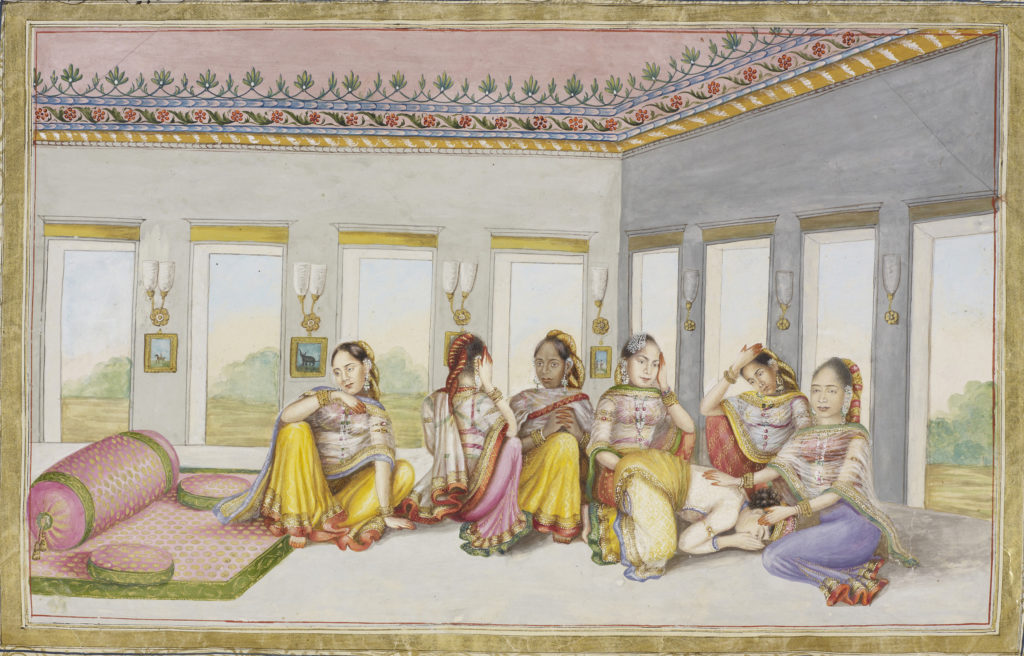
[dropcap]I[/dropcap]ndia certainly seemed open-minded in those days – a few African women even went on to become queens in India. An Ethiopian and a former slave, Mehr Lekha Begum Sahiba, was the third wife of Sayyid Mansur Ali Khan, the nawab of Bengal from 1838 to 1880. Yasmin Mahal was one of the wives of Wajid Ali Shah, the last king of Oudh in Uttar Pradesh (1847-56) in northern India. Bamba Muller (1848-1887), the daughter of an Ethiopian – who may have been enslaved – and a German banker, became Maharani Bamba Duleep Singh when she married the last ruler of the Sikh Empire in northern India.
As Diouf observes about the ascendency of the Africans: “The success was theirs but it is also a strong testimony to the open-mindedness of a society in which they were a small religious and ethnic minority, originally of low status. As foreigners and Muslims, Africans ruled over indigenous Hindu, Muslim and Jewish populations.”
As noted, Africans in India were known as Habshi and Sidi, which denoted their African origin. No matter their status, they proudly claimed these names like Sidi Said, Sidi Mansur, Yakut Dabuli Habshi, or Habash Khan. Long after their forefathers had disappeared, and after centuries of mixing with the local population, their descendants continue to identify themselves as Sidi. Today the Sidi population in India –there are also numerous Sidis in Pakistan—is estimated at about 60,000 people, mostly in Karnataka, Gujarat, and Maharashtra, as well as in Hyderabad and Lucknow. They are a part of India – but not rightfully acknowledged – neither as Indians nor given credit for their past accomplishments.
The Sidi, an African Community in India Today
[dropcap]S[/dropcap]o what exactly happened? Have Indians have become more color and class conscious as the years have gone by? Was color not such a big thing then? Indeed, intermarriages were frequent and instead of depicting Africans as dark-skinned, paintings of that time often show Africans as merely those with red hats. Was it three centuries of British Raj that made the Indians color-conscious?
Shobana Shankar, a historian at Stony Brook University, questions whether Indian hostility towards Africans is even more modern, stemming perhaps from competition over education and other resources. She points out that at the time of India’s independence, Nehru felt strongly that his country should ally with and support new African nations like Ghana; under his government, in 1950, Maulana Kalam Azad, India’s first Education Minister, founded the Indian Council of Cultural Relations, which sponsored many African university students seeking opportunities in India.
Shankar interviewed Africans who studied in India in decades past, when violence seems to have never reached the scale of today. One Senegalese student at Annamalai University in the 1970s recalled being “adopted” by an Indian family and businesspeople coming to his aid when he was threatened in public. Muslim Indians in the 1920s, writing in political newspapers, did remember the multiracial culture of their community, says Shankar, based on her archival research in Delhi.
Racism in India – The African Portraits by Mahesh Shantaram
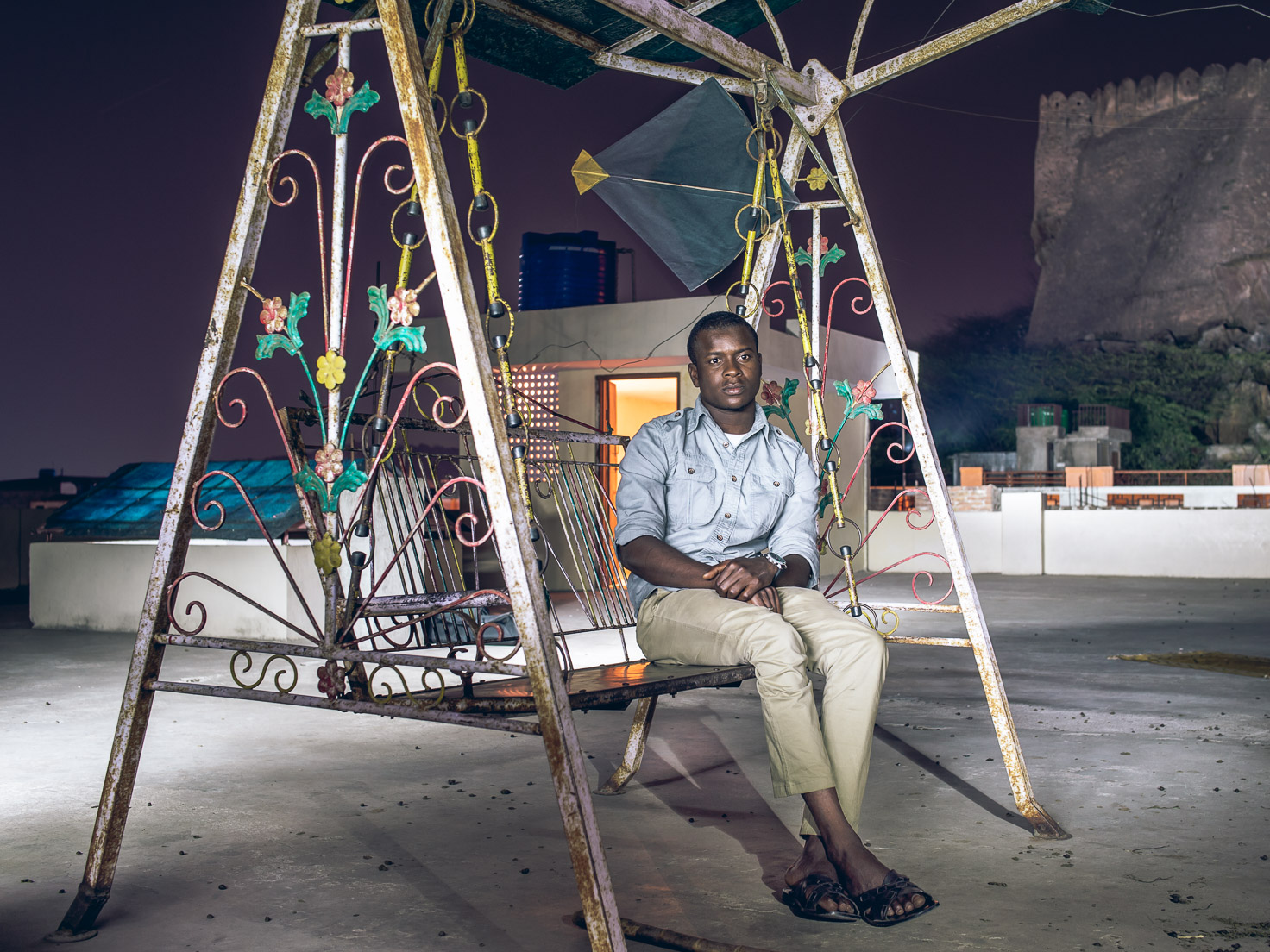
[dropcap]I[/dropcap]t is also strange – and sad – that Indians and Africans have not embraced their common love of music to cross over to each other’s cultures. In the old days some Africans, enslaved and free, were musicians playing at the courts or in state bands, while others worked independently. Two of their typical instruments, the lyre and the drum, are of African origin and are used in the shrines by the Sidis even today. An 1887 painting from Kutch portrays the Sidi Damal, a religious, ecstatic dance emblematic of the Muslim Sidis.
Bollywood has certainly appropriated many of the rhythms of the African cultures, including Hip-hop but Africans have never been depicted in a positive light in Hindi films where they are mostly shown as gangsters, prostitutes or drug dealers.
On a recent visit to India, Diouf visited the main compound of the Sidi community. She observed: “Like many Sidis in other areas of the country they are part of the lower working class: rickshaw and taxi drivers, domestics, peddlers, and laborers. In addition, their African looks often expose them to prejudice as does their Islamic faith.”
So this brings us back to the rough and tough present, where we still wonder about our attitudes and whether we have in fact regressed instead of getting more progressive and more in tune with the Hindu belief of Vasudhaiva Kutumbakam – the world is one family.
The Association of African Students demanded adequate security after the alleged assault on Nigerians in Uttar Pradesh. “In Greater Noida, they (locals) say that Africans ‘we don’t want you to be here anymore’. These are actually hate crimes towards African community. Africans are not secure in this country,” said Samuel Jack, president of the Association .
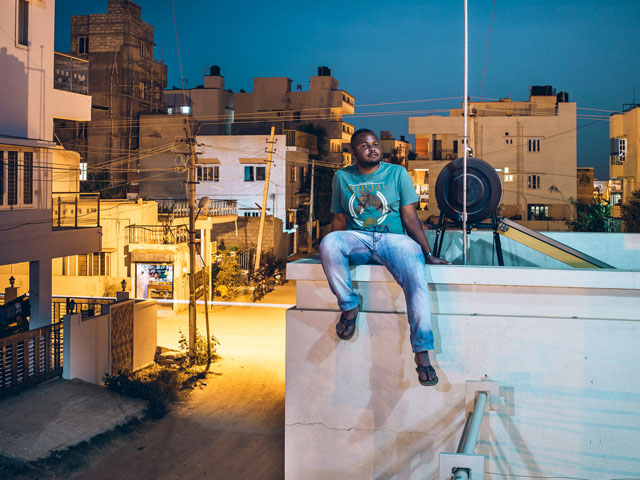
The Plight of African Students in India
[dropcap]W[/dropcap]hile African students have been in limbo, a few posts on the Facebook page of the Association of African Students shows that many young Indian people abhor the incidents. One writes, “My dear African friends, I am very sorry for the recent Attack on African students and the racism you might have faced in our country. As an Indian it is shameful to see to see such attacks in India. These are not reflective of Indian values. Hope police takes strong action against such goons. India loves Africa!”
Another advises them to avoid north India and come to south India – “We have good universities and way cooler people in the south!” Yet another notes, ‘The African continent is the most incredible place on the planet. I feel blessed that African students have come here to study.”
[dropcap]W[/dropcap]hile watching an in-depth talk show live from India, I did get to understand that this prejudice is not common on campuses but rather in groups of vigilantes – but it translates into a lot of heartache for African students who often have to pay more for auto-rides or are harassed by landlords. Some African students on this talk show noted that they have never been invited home by fellow Indian students, thus living as strangers in a strange land. My hearts went out to them – to be away from family and not to be given access to surrogate families and friends in a new land seems callous. In India the attitudes about color and class, of outsiders and insiders, are so ingrained that this may indeed be an uphill battle.
In the US, however, Indian-Americans often have a more nuanced approach to race relations, depending on their experiences and their travels. Still, many immigrants have brought their old biases about color and class with them, and for them the racial barriers and taboos still exist. I know of family relationships which have soured over children’s relationships with blacks.
Yet slowly the attitude is changing in a changed America. With the recent racism-related incidents against Indians in America, older Indians too are finally realizing that ‘there but for the grace of God go I.” Indeed, for a racist, what shade of brown is kosher, at what degree does the prejudice stop?
[dropcap]F[/dropcap]ortunately, many of the second-generation of Indian-Americans have grown up thinking for themselves and understanding the futility of labels. As Shankar points out, “Many young Indian-Americans have been galvanized politically to reject racism and xenophobia, particularly after 9/ll, when Sikhs, Muslims and others have been attacked.” They see themselves as brown and align with all people of color. They have loved Hip-hop and jazz, eaten the food of all nations and befriended so many different nationalities in school and college. It is that attitude of openness and acceptance which is needed in America and in India and everywhere else.
India had this open attitude once upon a time: it accepted the Africans and saw them rise from slavery to positions of power; it welcomed the Zoroastrians when they were fleeing prejudice and religious persecution in Persia; it allowed the Jews to make India their home when they were being vilified in other parts of the world. Today the Parsis and the Indian Jews are a loved part of the Indian family. It is time the same is done with the Africans too, the Sidis who have been here for centuries and are indeed Indians. One expects the same gentleness and warmth to be extended also to the African students and to anyone else who visits India.
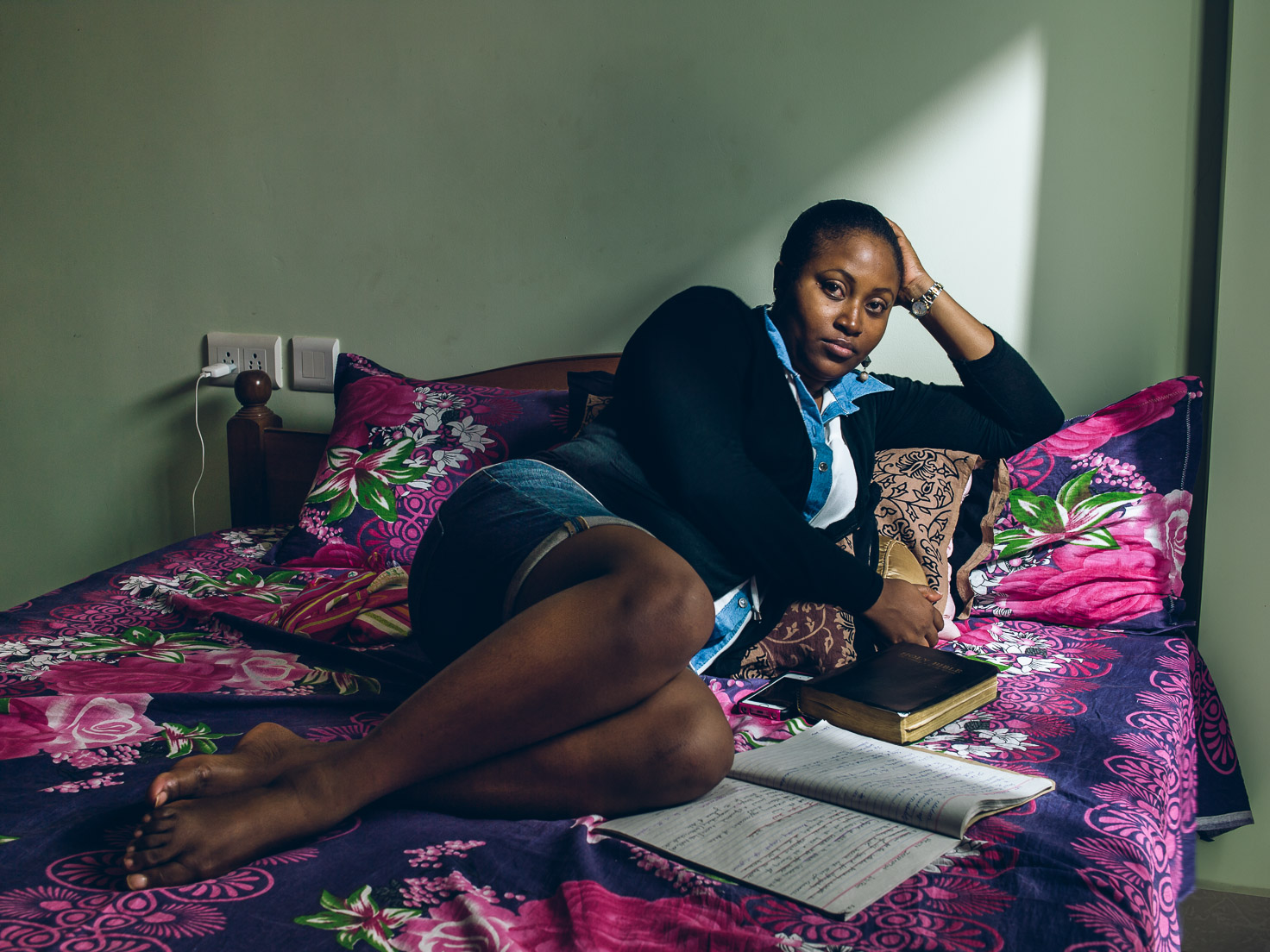
Connections in a New India
[dropcap]O[/dropcap]ne person who has done that is Mahesh Shantaram, an independent photographer in Bangalore, who through the lens of his camera has shown the humanity of each African in India. His stunning photographs capture the specialness of each one of them. He says, “Since the incident, I’ve been traveling across the country to meet Africans and learn about their experiences. I make portraits as a personal response to give them recognition. ‘It’s as if they don’t accept us as human beings,’ is what I keep hearing amidst all the heartrending stories. ‘Some of us are from royal families, but here we are treated like shit,’ one person told me.”
Shantaram adds, “I feel passionately for this developing project because it carries such a relevant and urgent message. It is about Africans, but it is just as much about India and its chronic racism problem that hasn’t seen effective means of redressal. A country that aspires to be a superpower is now at the cusp of coming to terms with good old-fashioned racism. Through my project, I seek to put Africans as well as the racism they face in the consciousness of the Indian public.”
(Grateful thanks to curators Dr. Sylviane A. Diouf and Dr. Kenneth X. Robbins for the use of exhibition material which I have woven into the text of this article.)
(A version of this article was first published in Khabar magazine in 2017 )
Due to a non-functioning plugin, the FB Likes disappeared 🙁 – if you like the post you can re-start the Likes all over again!Have a brand-new Like button installed!
Related Articles
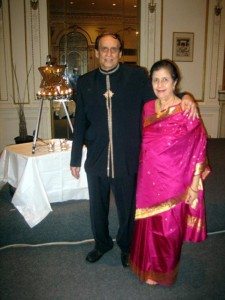
India – A Nurturing Sanctuary for Judaism

6 Comments
Hi Damu – it must have been quite an experience to actually see these forts in Janjira! There is so much of our history that we just don’t know. I don’t think these forts have been publicized much to tourists either.
Lavina, what an interesting piece of research. When I visited Janjira, I became aware of the African/Arab rulers who built forts and carried on the spice trade. I believe that was with Zanzibar or, perhaps I am mistaken, Ethiopia.
Hamel, it is indeed fascinating – so many unusual stories in India’s past .
Hamel Vyas via Facebook
Such fascinating history! Thanks for sharing Lavina Melwani!!
Lavina Namesake, it was quite an eye-opener for me too! So glad you enjoyed it!
Lavina Bhojwani via Facebook
Such an interesting article. Thank you for bringing this to our attention.